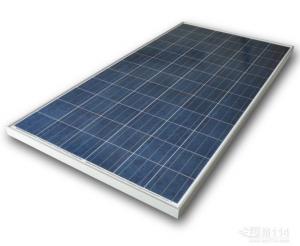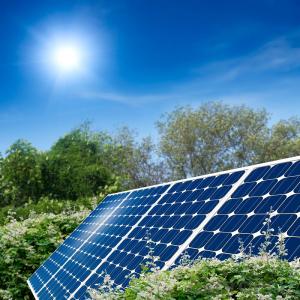Solar Panels Mini - CNBM Solar Monocrystalline 156mm Series 80W
- Loading Port:
- Shanghai
- Payment Terms:
- TT OR LC
- Min Order Qty:
- 1000 watt
- Supply Capability:
- 20000000 watt/month
OKorder Service Pledge
OKorder Financial Service
You Might Also Like
Specification
Materials
Silicon
Guarantee
12 yrs free from defects in materials and workmanship
No less than 90% within 10yrs and no less than 80% within 25yrs
TUV(IEC61215&IEC61730), CE, UL
Application
Photovoltaic/ solar/ green energy/ energy saving
Descriptions
1.High efficiency crystalline silicon solar cell. Even if under the weak light, the solar module can produce maximum power output.
2.Tempered glass (toughened glass): Anti-reflecting coating and high transmission rate glass increase the power output and mechanical strength of solar module.
3. EVA and TPT: Using high quality EVA and TPT to prevent destroying and water.
4. AI frame: Without screw, rner connection. 6 holes on the frame can be installed easily.
5. Junction box: Multi function junction box with water proof.
6. Long lifetime: ≥25 years; Less power decrease.
7. Good performance of preventing from atrocious weather such as wind and hails.
8. Resisting moisture and etching effectively, not effected by geology.
9. The certificate issued by international authority: UL, TUV, IEC, CE.
Packaging Details
26pcs/pallet, 28pallets/ 40HQ
Our solar panels are packed in cartons, and then pallet.
Shipping by sea or by air are both ok, it up to customer’s chose.
We’d like to inquiry the freight cost for customer after be informed exact quantity and destination address.
CNBM International Corporation is a professional solar panel manufacturer in China for CNBM brand . Silicon panel ( silicon module), as our main product, has high quality and good service. Our products are very popular in Europe, Australia, England, Middle East, Mexico, Argentina, Chili, Singapore and Africa.Furthermore, our products have gained international authorized certificates like TUV, UL and CE.



Why Choose Us
A. Professional Manufacturers , Strict quality control & power classification Silicon Solar PV Module
B. 100% A grade solar cell with Positive tolerance power range.
C. High Conversion Efficiency , High transmission rate , low iron tempered Anti-reflecting/coating film 3.2mm glass
D. Anti-aging & high visosity EVA
E. high frame resistant & Double-sided fluorine TPT
F. Anodized aluminum alloy high thickness frame
G. 3 or 6 bypass diodes , 90mm 4m2 cable , MC4 connectors & waterproof junction box
H. Long life, Easy installation, high wind & hail impact resistance
I. Be resistant to atmospheric exposure & effects of delamination
J. ISO9001:2008/ISO14001:2004/OHSAS18001:2007/ CE /TUV/CEC/ IEC/EN61215 IEC/EN61730/CHUBB INSURANCE
K. 10Years Manufacturing Quality Warranty , 10Years 90% Power output Warranty, 25Years 80% Power output Warranty
- Q: If i took a lazier pointer and aimed it a solar panel would it take in the light. Also what types of lights would work on a solar panel like L.E.D, uv light bulbs.
- Build okorder /
- Q: Can solar panels be used in areas with high levels of pollution from industrial emissions?
- Yes, solar panels can still be used in areas with high levels of pollution from industrial emissions. While pollution can have a slight impact on the overall efficiency of solar panels, they can still generate electricity even under such conditions. However, it is important to regularly clean the panels to ensure maximum performance and efficiency. Additionally, investing in advanced solar panel technologies, such as anti-soiling coatings, can help mitigate the impact of pollution and maintain their effectiveness in polluted areas.
- Q: i am looking for solar panels and wind mill to put around our house and i was wondering were to find them
- Your best bet would be to go down to a place that has magazines and look through their solar magazines, like Solar Today and Home Power. In these you'll will find many places online where you can buy solar and wind power products. They also have good reviews so that you can be an informed consumer and don't end up buying poor quality products. I've seen performance reviews on a variety of models.
- Q: Can solar panels be used in areas with high levels of air pollution?
- Yes, solar panels can be used in areas with high levels of air pollution. While air pollution can reduce the efficiency of solar panels to some extent, they can still generate electricity even in polluted environments. However, regular cleaning and maintenance may be required to ensure optimal performance and to prevent the buildup of pollutants on the panels' surface.
- Q: I want to get a solar panel to run a fan (or two) for swamp coolers.I'm not looking to power 20box fans, just maybe some of those auto fans.What the heck kind of panel do I need? What is a power inverter and what does it do?Will I lose all my power if I use a 00' extension cord?How do I choose what I'm going to need?
- Solar panels turn sunlight into direct current electricity usually at 2, 24, or 36v. You could probably have a very simple system with just a panel and a few dc fans assuming that: the panels never put out more power than the fans can handle, you don't mind the fans slowing and stopping when the sunlight fades. If you want the fans running more of the time, you will need the panel hooked to a charger that charges a car/marine type battery and the fans connected to the battery. The longer the wires, the thicker they need to be (and more expensive). If you want to use AC (alternating current like your house uses) you will need an inverter (which turns DC into AC). Each device and each section of wire loses power due to inefficiency (heat produced). Contact a solar company on line, in person, or learn more.
- Q: Are solar panels suitable for all types of roofs?
- No, solar panels may not be suitable for all types of roofs. The suitability of solar panels depends on factors such as the roof's orientation, pitch, shading, and structural integrity.
- Q: Are solar panels suitable for residential use?
- Yes, solar panels are highly suitable for residential use. They provide a clean and renewable energy source, reduce electricity bills, and help homeowners become more self-sufficient in terms of energy. Additionally, advancements in technology have made solar panels more efficient and cost-effective, making them an increasingly popular choice for residential properties.
- Q: Solar panel for battary charging
- Are okorder / or hook up several meters and supervise the process regularly. The UPS has no role in the charging—only the discharging.
- Q: Properties of solar panel?I know this is too general,but i am to write a report on the materials used to make solar panels,and i am to include the physical, mechanical ,and chemical properties of the materials.It's just too general,such that i am lost.There are so many types of solar panels.So i hope some experts on this subject can give me a general guide lines ,maybe the tensile strength ?as much as you can please.
- Solar power Power Can Help Preserve You Money The cost of power is going up, and will only keep going up. Reaction Solar power Power Systems will help you save a large number of kWh each season by utilizing screen technology. Power created by your program are kilowatts you don't need to pay for! Every electricity program will make a number of Small-scale Technology Accreditations (STCs) upon purchase based on the size of the program and the location where it will be set up. These STCs have a market value and can be exchanged and marketed just like stocks. Power created by your solar PV program can be marketed to the lines for a top quality cost via Feed-in charges. These feed-in charges are different in every state, but the primary idea is te same, to compensate entrepreneurs of small-scale power creation. You are eligible to sell some or all of the ability you produce for more than you would normally pay for it. Would you like to decrease costs with solar power? Contact Reaction and get it done these days. Solar Power Can Help Preserve The Environment click to enlarge Producing usable direct sunlight generates no dangerous pollutants. Every season coal-fired power vegetation belch a large number of loads of as well as contamination into the weather so we can run our refigerators, toaster ovens, and have hot bathrooms. Taking your power form your own ceiling means you are no longer leading to that contamination. In fact, power companies will be paying you for electricity! Help Sydney accomplish its 5% green energy focus on by 2020 and international objectives of 20%, by changing to solar power and decreasing your own effect on international warming. Compared with other small-scale turbines, solar power is completely quiet. Turn the team radiation into power without making a audio and decrease environmental disturbance.
- Q: How do solar panels affect the roof's structural integrity?
- Solar panels do not significantly affect the roof's structural integrity. They are typically lightweight, and their installation involves mounting them securely onto the roof without causing any damage or weakening.
Send your message to us
Solar Panels Mini - CNBM Solar Monocrystalline 156mm Series 80W
- Loading Port:
- Shanghai
- Payment Terms:
- TT OR LC
- Min Order Qty:
- 1000 watt
- Supply Capability:
- 20000000 watt/month
OKorder Service Pledge
OKorder Financial Service
Similar products
Hot products
Hot Searches


































